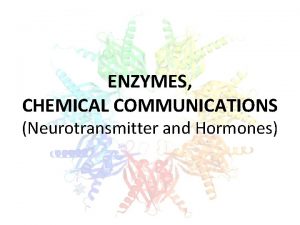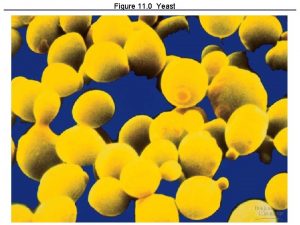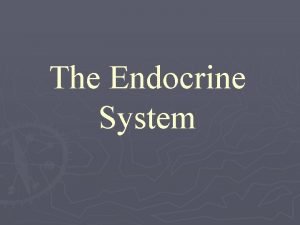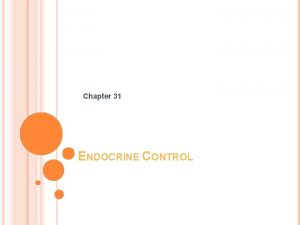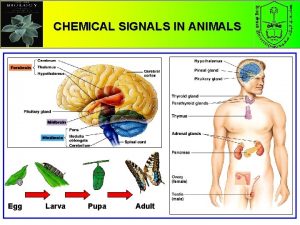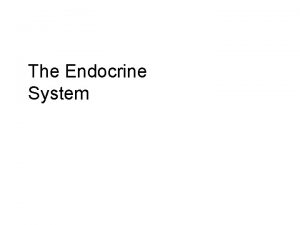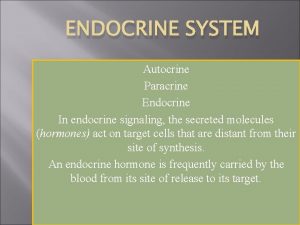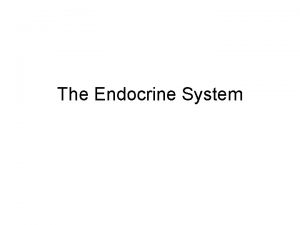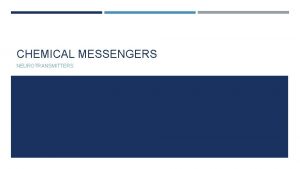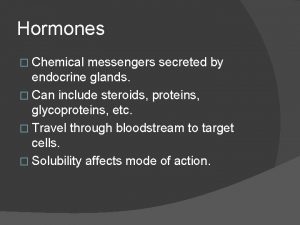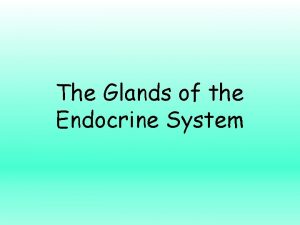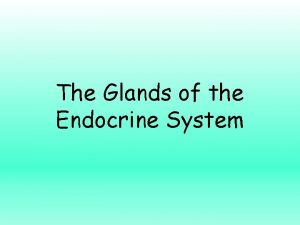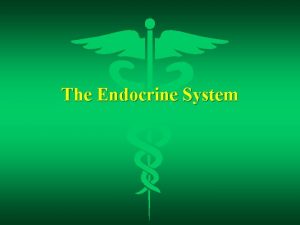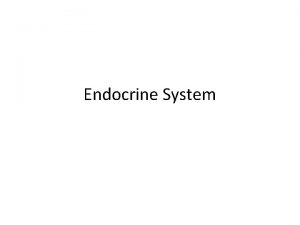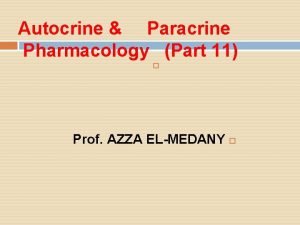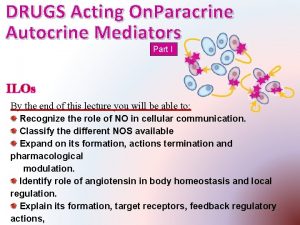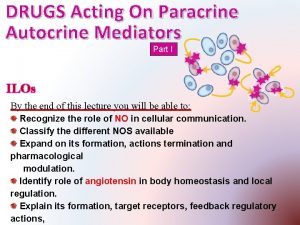Endocrine Glands Chemical Messengers Autocrine self signal Paracrine
















- Slides: 16

Endocrine Glands

Chemical Messengers • Autocrine • self signal • Paracrine • neighbor signal • Endocrine • distant signal • Pheromone • airborne signal • same species • Allomone • airborne signal • different species

Hormone Types

Homeostasis Mechanism Receptors input signals skin responds to cold temperature sends signal to brain Control Center integrating center brain interprets temp signal makes you shiver Effectors output mechanism muscles shiver creating heat

Negative Feedback Results in an immediate reversal of the imbalanced system Immediately negates the disruption Most systems in the body work via negative feedback systems temperature glucose balance water balance blood pressure

Positive Feedback Immediate further disruption of the imbalance so as to later return to homeostasis childbirth ovulation

Positive Feedback: Childbirth

Neuroendocrine Reflex Baby suckling stimulates receptors on the nipple Action potential travels to the hypothalamus Hypothalamus sends oxytocin to posterior pituitary gland Posterior pituitary releases oxytocin into the blood stream Oxytocin travels to the breast and triggers milk release

Posterior Pituitary Hormones synthesized in the hypothalamus Released by the posterior pituitary • Oxytocin • milk ejection • orgasm • Vasopressin or ADH • water balance • blood pressure

Anterior Pituitary Releasing hormones synthesized in the hypothalamus • CRF/CRH • Gn. RH • GHRH • TRH • PRH Triggers hormone release in anterior pituitary • ACTH • LH/FSH • GH • TSH • PRL

The Stress Continuum

Stress The process by which we perceive and respond to certain events, called stressors, that we appraise as threatening or challenging

HPA Axis Hypothalamus • CRF/CRH Pituitary • ACTH Adrenals • Cortisol

Stress and Hormone Release

Stress Diathesis Model Existing Correlations: • Adult Depression : Elevated Cortisol levels • Childhood Abuse : Adult Depression Stress Diathesis Model: • Genetic Predisposition plus • Early Abuse/Neglect leads to • Adult Depression Animal Model shows: • More CRF neurons • Larger CRF neurons • More sensitive CRF neurons Early abuse permanently alters the stress response increasing the risk of depression

General Adaptation Syndrome (GAS) 1. Alarm Reaction 2. Resistance Reaction 3. Exhaustion
 Chemical messengers of the nervous system
Chemical messengers of the nervous system Persamaan antara sistem saraf dan endokrin
Persamaan antara sistem saraf dan endokrin Phosphorylation cascade
Phosphorylation cascade Autocrina
Autocrina Epithelia
Epithelia Major endocrine glands male and female
Major endocrine glands male and female Endocrine system organs
Endocrine system organs Difference between endocrine and exocrine glands
Difference between endocrine and exocrine glands Exocrine glands are ductless
Exocrine glands are ductless Endocrine glands
Endocrine glands Whats the difference between endocrine and exocrine glands
Whats the difference between endocrine and exocrine glands Endocrine glands
Endocrine glands Endocrine glands
Endocrine glands Endocrine glands secrete
Endocrine glands secrete Endocrine glands
Endocrine glands Endocrine glands
Endocrine glands Endocrine glands
Endocrine glands

